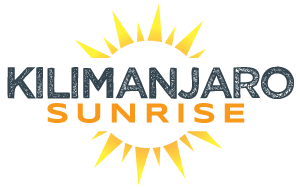With a little research, planning, and training climbing Mount Kilimanjaro will not be as difficult as you would initially imagine.
So where should you start? If you follow the steps below before you know it, you’ll be heading to Africa on the trip of a lifetime.
So without further ado, here is our list of steps to climb Kilimanjaro.
 FIND A KILIMANJARO GUIDING COMPANY
FIND A KILIMANJARO GUIDING COMPANY
This in itself can seem like a daunting task. After all, there are over 200 guiding companies on Mount Kilimanjaro, but only 20 or so are reputable. So there, we have already narrowed the list to less than 20.
But that is still too many. So let’s take it another step further. By law, you have to have guides and porters on Kilimanjaro. One of the biggest issues with porters is how the lower-end “budget” operators treat them. Everyone pays the same park and permit fees, so where do these budget companies cut costs? They do it by using second-hand tattered tents and equipment, and not paying them well. They also only feed their porters once a day and they do not give them the proper shoes and clothing for heading to the extreme environment of Kilimanjaro. Many get sick and could even die. For this reason, the Kilimanjaro Porters Assistance Project (KPAP) was created.
Several companies are a member of KPAP. You can see them here: https://mountainexplorers.org/climb-with-a-partner-for-responsible-travel-company/
But wait, there are 150 companies on this list, how does that help? Well from this list, you can check Google and Facebook Reviews, check Kilimanjaro forums, and TripAdvisor and narrow down your search. Once you have a shorter list, check the ones that focus on safety, have great reviews, and give daily health checks.
Once you have the list more manageable, send emails to the ones that you are interested in climbing with. You’ll receive responses. From these emails, you’ll probably get a good feeling about the companies on your list.

CHOOSE WHEN TO GO
Now that you have one of the difficult ones out of the way, the next step is choosing what time of year works for both you and the weather.
This one is easier. The first thing you need to know is when are the best times to climb Kilimanjaro. Below are the best times by month.
BEST
- January
- February
- July
- August
- September
- The first half of October
OKAY
- The first half of March
- Second half of June
- The second half of December
BAD
- End of March
- April
- May
- November
Why These Months?
Kilimanjaro is in Tanzania, it is very near the equator. As such, it doesn’t have traditional seasons. Instead, it has dry seasons which are the best time to go, and rainy seasons which are a bad time to go. Some months are transition months where part of the month is good to go but may have more weather and clouds.

CHOOSE A ROUTE
Furthermore, choosing the right route can also make your climb more successful.
There are seven main climbing routes on Kilimanjaro. However, we have narrowed down your choices by only offering four of the seven routes. They are the 8-Day Lemosho, 9-Day Northern Circuit, 7-Day Machame, and the 6-Day Rongai. We offer these routes as both Group climbs and Private climbs.
Why not the other three? The other three are Umbwe, Shira, and Marangu.
The Umbwe is the oldest route and was originally called the “Whiskey” route. However, it has a terrible summit success rate—Less than 50% due to how steep it is. That is why we do not offer it.
The same goes for the Shira route. Instead of hiking through the rainforest you drive past it and start on the Shira Plateau. This doesn’t allow your body enough time to acclimatize and therefore reduces your summit success rate to roughly 50% as well.
Finally, the Marangu route. This route is also one of the oldest routes and is called the “Coca Cola” route because it is easier. However, it is the only route that has clients sleep in huts which can hold up to 30 people. This is very noisy. Additionally, the route goes up and down on the same trail so it also is very crowded. If the only time you can make it to Kilimanjaro is during the rainy season, we do offer the Marangu as a private climb so you can sleep in huts (when there aren’t many people) so you can avoid sleeping in tents on the wet and muddy ground.
Getting back to the routes we offer. Of the four routes, each has its merit.
The Lemosho is our favorite. We feel it is the prettiest and has over a 90% success rate. It travels across the Shira Plateau before circling counterclockwise around the summit eventually heading up from the Southeast side.
The Northern Circuit is our second favorite. It starts with the Lemosho and continues together across the Shira Plateau until Lava Tower where the Northern route circles clockwise around the north side of Kilimanjaro. The Northern Circuit is the only route on that side and has stunning views of the Kenya plains below. It also has a 90% success rate since it is nine days on the mountain.
The Machame route is almost the same as the Lemosho. However, it is one day less, it loses most of that in the rainforest and starts much steeper than the Lemosho route. It is the most popular route and has 45% of all treks on it. Its success rate is around 70%. The Machame route is now referred to as the “Whiskey” route.
The Rongai route. This route is only six days on the mountain. However, it is a good route if you don’t have a lot of time. Since it is shorter the success rate drops to about 60%. It has a more gradual approach to the summit so it is a good one for those who do not have as much hiking experience.
 MAKE YOUR DEPOSIT
MAKE YOUR DEPOSIT
Now that you know the company, route, and time of year, the next step is to book your trip. Most companies require a 20-30% nonrefundable deposit. Just because it is nonrefundable, doesn’t mean there isn’t some wiggle room. Trip Insurance is required and if you cannot make your date you can file a claim with your travel insurance to get reimbursed. Make sure when you book your trip insurance, that you choose “cancel for any reason” or things like COVID, injuries, or your job could make getting reimbursement impossible.
Additionally, many companies will work with you if you need to change your dates. They will probably charge a fee to change them since deposits of hotels and park fees have already been paid.
Once you make your deposit, you should receive a long email and perhaps a guidebook that tells you your next steps. Make sure you read this information as it is important to have a successful trip.

BOOK YOUR FLIGHTS
Once your trip is confirmed, Book your flights
There are many options for getting to Kilimanjaro International Airport (JRO). The best option is flying from the US on Delta and connecting to KLM. This will take you to Amsterdam and then directly to JRO.
You can also fly American and Qatar which will take you through Doha, Qatar before continuing to JRO.
Additional options are to connect to Ethiopian, Emirates, or a combination of airlines. Just remember, you have to end up in JRO. We will pick you up from there for a fee if you reserve a shuttle before you arrive. If not, it is a $50 taxi ride to the hotel.

PREPARE
So now that you have made your deposit, you need to prepare for your trip. Follow the links below to read more about preparation.
- Gather your gear: https://kilimanjarosunrise.com/how-to-prepare/#gear
- Train for your climb for 8-12 weeks: https://kilimanjarosunrise.com/how-to-prepare/#train
- Obtain a valid passport and Tanzanian visa: https://kilimanjarosunrise.com/how-to-prepare/#insurance
- Get the recommended vaccinations and prescription medicines: https://kilimanjarosunrise.com/how-to-prepare/#vaccinations
- Purchase travel insurance: https://kilimanjarosunrise.com/how-to-prepare/#insurance

TRAVEL TO TANZANIA
60 days before your flight, your remaining balance should be paid. From there just continue gathering gear and training. Here are some items to be aware of:
- Plan for possible flight delays, COVID testing, and lost or delayed luggage
- Pack your Carry-on with your important gear
- Arrive a day early to get over jet lag
- Rest and recover from the long flight
- Attend trip briefing

CLIMB MOUNT KILIMANJARO
Finally, when you are actually on the mountain, here are some tips to make sure you make the summit.
- Hike at a slow pace
- Drink 4-5 liters of water a day
- Eat even if you are not hungry
- Protect yourself from the sun, rain, and cold
- Listen to the guides
- If you feel sick, tell the guide.
- Enjoy the journey
FAQ: HOW MUCH DOES IT COST?
People ask all the time how much the trip will cost per person. Here is an estimate based on several factors
- The price depends on the route, the number of people on your trip, whether it is a group or private climb, and if you are booking a safari.
- Airfare from the United States ranges from $1,500-$3,000 depending on the time of year, location, and airlines.
- Tipping is customary for the mountain staff. Budget approximately $300 per person. Read more here: https://kilimanjarosunrise.com/how-to-prepare/#tipping
- A Tanzanian Visa is $100 for US citizens and $50 for European citizens.


 FIND A KILIMANJARO GUIDING COMPANY
FIND A KILIMANJARO GUIDING COMPANY

